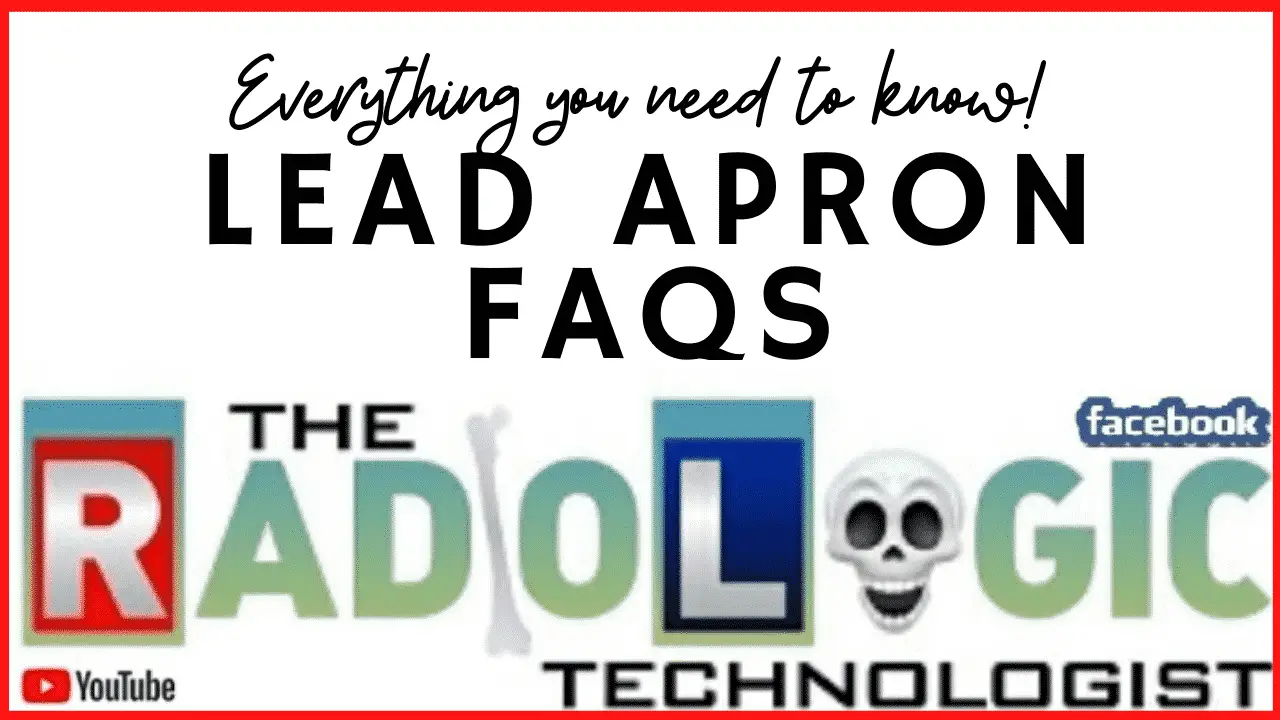How effective is a lead apron?
Lead aprons can be one of the most effective personal radiation protection devices available to technologists. Distance from the beam is also important. The lead should be worn by every employee within six feet of the primary beam in a fluoroscopy room. Studies show that lead aprons may lower the dose received by over 90%, depending on the thickness and composition of the apron.
How heavy is a lead apron?
A Lead-Free front protection apron typically weighs in at roughly seven pounds. Even at this light weight, it can still obtain a depletion rating of 97% at 100 KVP. Results vary depending on the material used in the apron and the quality or length of time the apron has been in circulation.
Do you need a lead apron on with digital X rays?
Yes, digital xrays still use radiation to produce an image. If you are an employee who will be constantly around an x-ray emitter, it is recommended that you use lead to protect yourself from repeated unnecessary radiation. Patients, on the other hand, typically don’t need lead protection if newer equipment is being used. Radiation beam strength has been reduced by 90% since the 1970s and the risk of damaging effects is negligible.
Does Lead protect against radiation?
Lead shielding acts as a barrier or shield from radiation as a result of its high molecular thickness. Efficient at stopping gamma rays as well as x-rays, lead is made use of as radiation protection in applications varying from x-ray imaging and also PET spaces to nuclear activators.
Do lead aprons stop radiation?
Lead aprons minimize the radiation dose to the reproductive body organs from a range of diagnostic x-ray treatments. While it has been said for decades that radiation has the potential of creating germ cell anomalies that might be passed on to future generations, there has yet to be a confirmed case of this happening.
Is lead apron necessary?
As of 2019, this is a great debate in the scientific community. Two well-known radiation groups have come out against the use of lead aprons on patients. The American Academy of Physicians in Medicine (AAPM) and the American College of Radiology (ACR) have both agreed lead shielding is no longer needed for patients. On the contrary, employees who are exposed repeatedly at their workplace should continue to use lead shielding to block the radiation. This is solely recommended due to the propensity to be exposed repeated in their work environment.
Are lead free aprons safe?
The Xenolite Non-Lead Elastic Tab Apron is 40% lighter than common lead aprons and also has a 0.50 mm lead similarity and 100% frontal defense at 100 kVp. The non-lead and lead-free aprons are recyclable and also safe for non-hazardous disposal and also are exceptional for lengthy procedures.
Why do doctors wear lead aprons?
Lead aprons are made use of in clinical centers and hospitals to shield healthcare workers and patients from x-ray radiation direct exposure from diagnostic radiology treatments. Lead aprons are protective garments that have been created to shield the body from the hazardous results of ionizing radiation during medical imaging procedures. Although this practice is becoming antiquated on patients who rarely receive radiation from imaging procedures during their lifetime.
What is a lead apron used for?
The function of the lead apron is to decrease direct radiation exposure of a medical facility employee (radiographers, radiologists, etc) to x-rays. For more information on this topic, see my article here.
How long do lead aprons last?
Lead aprons, skirts, thyroid shields and gloves as well as vest garments need to be between 0.35 and also 0.5 mm thick, properly kept, and checked every 6 months to a year for cracks, creases, or rupture to make certain sufficient security. These examinations are kept in logbooks and will be inspected by regulating agencies during routine inspections.

